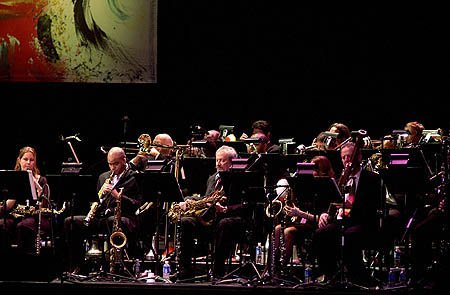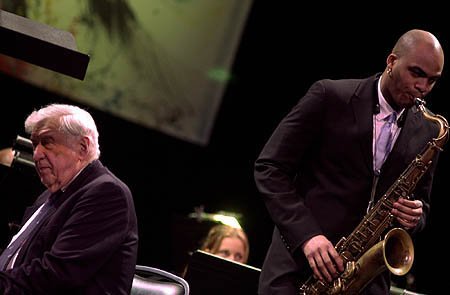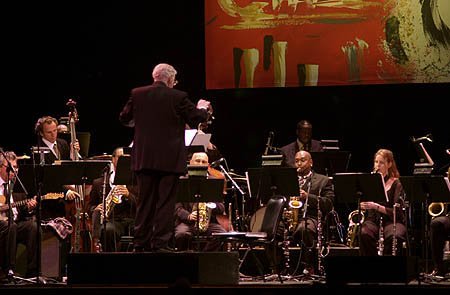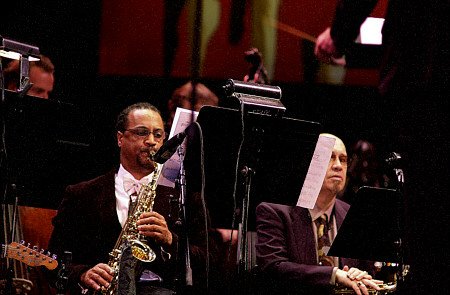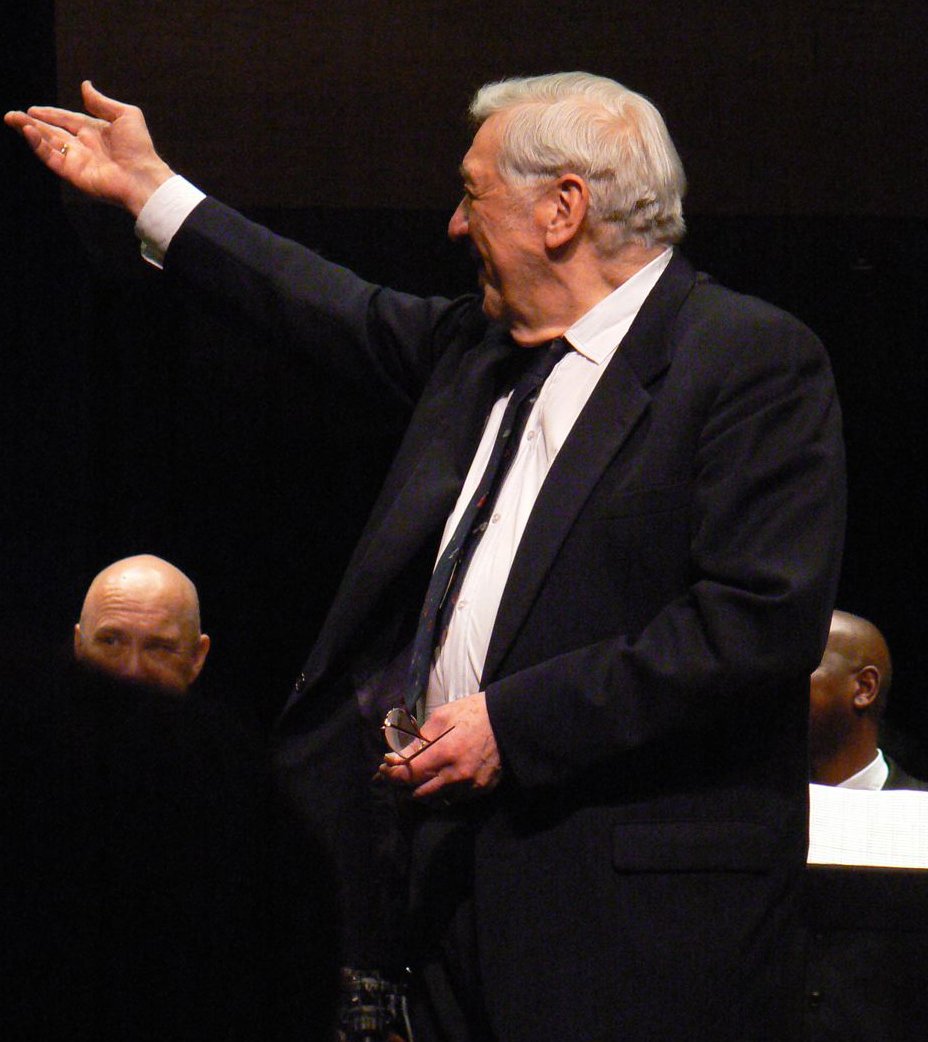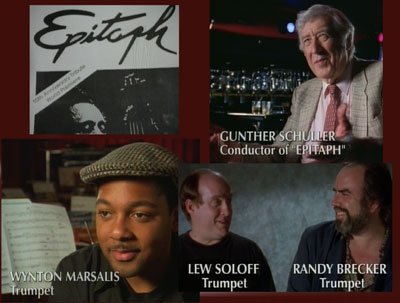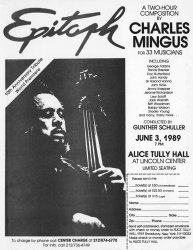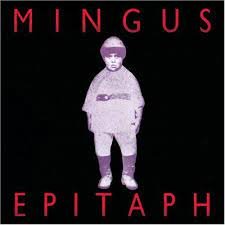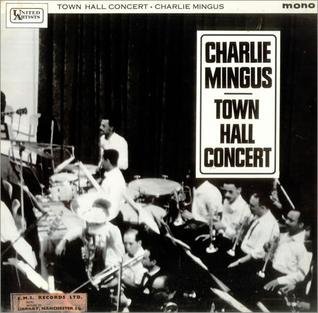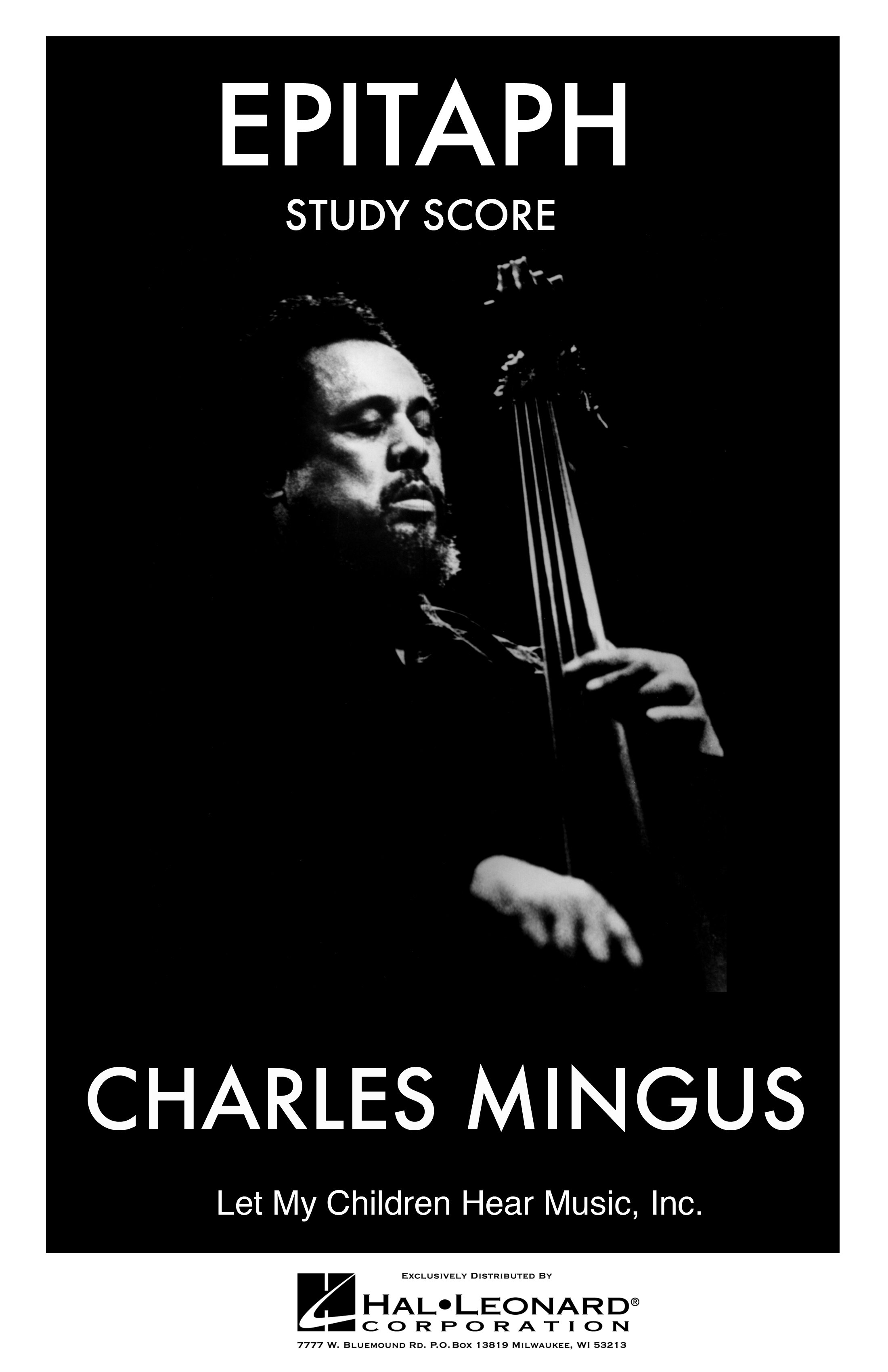“Among the most important, prophetic, creative statement in the history of jazz.”
“I wrote it for my tombstone...”
Nearly 18 years after its world premiere at Lincoln Center in 1989, "Epitaph" was performed in a series of concerts in Spring 2007 to coincide with Charles Mingus's 85th birthday year. It was again conducted by Gunther Schuller, at Jazz at Lincoln Center, the Gehry-designed Walt Disney Concert Hall in Los Angeles, the Tri-C Jazz Festival, and Chicago's Sympony Center. Considered the most important and prophetic jazz composition since Ellington's extended works, "Epitaph" was composed by Mingus over several decades. After his death in 1979, musicologist Andrew Homzy discovered the missing 500-page score in an old trunk in the home of his widow Sue Mingus while cataloging the Mingus collection now housed at the Library of Congress. Constructed as a suite of 19 movements for 31 musicians, and running well over two hours, "Epitaph" is a history of jazz, encompassing musical forms characteristic of Mingus's orchestral composition: echoes of Ellington and gospel, extended classical forms, abrupt rhythmic shifts, lyrical passages that explode into dissonant choruses, and high register solos underscored by ostinato refrains on basses and trombones. Adapted and conducted by Gunther Schuller, "Epitaph" has been performed at festivals and concert halls throughout the United States, including Tanglewood, Wolf Trap, Cleveland Symphony Hall, San Francisco Symphony Hall, Chicago Jazz Festival and in all the major capitals of Europe. The full score of Epitaph is now available for the first time from Hal Leonard, at your favorite music dealer. (Currently at SheetMusicPlus, Stanton Sheet Music, Compumusic, Music Forte, Andy's Music Online, and more.) On July 25, 2008 NPR broadcast the Walt Disney Concert Hall performance of Epitaph which will remain available on their website.
Listen to the 2007 Concert:
2007 Mingus Epitaph Performances
Wed, Apr. 25 2007 7:30pm Frederick P. Rose Hall, Home of Jazz at Lincoln Center, New York. List of 31 musicians.
Fri, Apr. 27 2007 8pm Tri-C Jazz Festival Cleveland, OH List of 31 musicians.
Wed, May. 16 2007 8pm Walt Disney Concert Hall Los Angeles CA List of 31 musicians.
Fri, May. 18 2007 8pm Symphony Center Chicago Symphony Orchestra Chicago, IL List of 31 musicians.
Video clips from EPITAPH performance, Lincoln Center Alice Tully Hall (1989)
1. Freedom
2. The Soul
3. Wolverine Blues
4. Children's Hour of Dreams
5. Better Get Hit in Your Soul
EPITAPH REVIEWS
1989
“Epitaph was heard for the first time Saturday night at Alice Tully Hall at a concert that ranks with the most memorable jazz events of the decade.” The New York Times: Premiere of a Boisterous Jazz Overview by Mingus; June 5, 1989 by Jon Pareles
“Epitaph' is pure Mingus: rich and sonorous, by turns humorous and achingly beautiful. "Epitaph" is the big event of the year in jazz. Rolling Stone
"...a monumental composition by the protean jazz bassist. The vivid result resembles its creator: difficult but dazzling.” Time Magazine
"Like Duke Ellington, he sought to transcend the song-and-dance origins of jazz and integrate composition and improvisation in extended orchestral forms. "Epitaph," a two hour symphonic work that Mingus said he wrote for his tombstone, is proof of his genius.” People
"Gorgeous melodies give way to dark, dense sonorities; tempestuous pronouncements contrast with gospel-inspired petitions. It reflects perfectly Mingus's restless, exploratory nature.” Billboard
"...As one plays and replays it, one gradually catches the musical quotations, the structural shifts, the internal byplay and repeating motifs that make "Epitaph" a landmark composition. The romantic ballads within "Epitaph" – "The Soul' and 'Noon Night' – are just waiting to become standards. The Washington Post
"Epitaph" is a vital, living document of a dream shared...For decades to come, listeners the world over will be warmed by the fire of this 18-movement masterpiece.” Entertainment Weekly
".As Gunther Schuller concludes: "It's uncategorizable. It has nothing to do anymore with "jazz" or "classical" music, or anything. It's just Mingus." The Boston Phoenix
“It marks the first advance in the composition of large-scale jazz works since Duke Ellington’s 1943 “Black, Brown and Beige…” The New Yorker Jazz: Mingus Regained; August 21, 1989 by Whitney Balliett
“The beautifully controlled playing covered a broad range of styles and emotions. A work about hope and overcoming, pride and self-testing, and just plain living, ‘Epitaph’ will only grow in mastery in the years to come.” Chicago Sun-Times by Lloyd Sachs
2007
“The highlight of this Symphony Center jazz season occurred Friday evening: Charles Mingus’ Epitaph,” played by a 31-piece band conducted by Gunther Schuller. Mingus intended this 2 1⁄2 - hour composition to be monumental, and it surely was. Its many contrary, simultaneous events approached Charles Ives’ wildest creations, while its harmonic richness and variety of sonic effects approached Duke Ellington, and it included enough melodies to stuff several Mahler symphonies.” Chicago Sun-Times Review Mingus’ ‘Epitaph’ elephantine, messy yet often a delight; May 21, 2007 by John Litweiler
“Though Charles Mingus long has been revered as a fearlessly iconoclastic musician, listeners cannot take his full measure until they’ve heard his “Epitaph.”“For though Mingus remains justly admired for tunes such as “Goodbye Pork Pie Hat,” the scale of his ambition and breadth of his achievement in “Epitaph” place him at the pinnacle of American composition. For starters, several movements in “Epitaph” are so daringly conceived and eloquently articulated that they stand on their own as brilliantly realized works.”“…Mingus in “Epitaph” addresses practically the whole of jazz history, from his bracingly dissonant reinterpretation of Jelly Roll Morton’s “Wolverine Blues” to his exquisitely detailed reimagining Thelonious Monk’s “Well, You Needn’t.” “Charles Mingus’ monumental ‘Epitaph’ gets full treatment”; May 21, 2007 by Howard Reich Chicago Tribune
“Too bad Mingus wasn’t around to bask in the hard-earned standing ovation for “Epitaph,” a monumental achievement unparalleled in the annals of jazz.” The Plain Dealer “Mingus marathon a moving ‘Epitaph’”; April 29, 2007 by John Soeder
“Epitaph turns out to be a perfect title since it defines Mingus as an original synthesis of the past, present and future of music – reaching out to the radical avant-garde with wandering dissonances worthy of Charles Ives; looking back to gospel, Jelly Roll Morton, Vernon Duke, bebop, Mingus’s own greatest hits (“Better Get It In Your Soul”), and above all, Ellington.” Variety.com “Epitaph by Charles Mingus”; May 17, 2007 by Richard S. Ginell
“…intimate linkages between improvisations and ensemble passages that characterize all of Mingus’ music, regardless of the size of the ensemble, the sardonic humor that urges him to include quotes – within the same piece – from Dvorak’s “Humoresque No. 7,” David Rose’s “Holiday for Strings” and Duke Ellington’s “Reminiscing in Tempo”, the incipient feeling of approaching chaos, of spontaneity that could break out in any direction at any time.” Los Angeles Times (online) “Gunther Schuller tackles Mingus’ ‘Epitaph’ at Disney”; May 18, 2007 by Don Heckman
“Everywhere you looked in this band, there was a genius – from the great Boris Kozlov standing next to the great Christian McBride in place of the Mingus bass fiddle to Kenny Rampton, Jack Walrath, and Ryan Kisor in the trumpet section, Ronnie Cuber and Craig Handy among the saxophones handling the murky middle parts.” The Hollywood Reporter “Old grudge is laid to rest amid Mingus masterpiece”; May 21, 2007 by Tony Gieske
Click here to read Wikipedia's entry on "Epitaph," which includes a full list of personnel on the original recording. The entry is written by John Sobel, a jazz critic who was at the rehersals and performance. http://en.wikipedia.org/wiki/Epitaph_(Mingus)
1989 Epitaph Album
1989 flier
2007 flier








